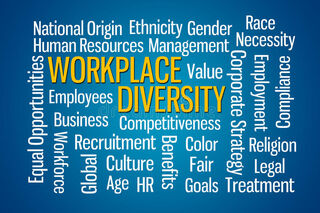Bias
Achieving Racial Equity in the Workplace
There is still a lot of work to do.
Posted August 30, 2020
Keeping employees safe in the workplace is not solely about a pandemic, but it is also about helping employees and their workplaces address issues of equity. Achieving racial equity in the workplace is one of the most important issues that companies will tackle in this decade.
After the 8 minute and 46 second video murder of George Floyd, the United States was reminded in horror that racism is still very much alive and well in this country, and that the overt racism in our society has always been there. Racism touches the lives of our family, friends, our classmates, our peers, and our neighbors. The legacy of racism is complex and must be reckoned with in the workplace. In putting America to work, this post explores the status of the changing workforce or in this case, the lack of change in the faces and the limited access in that workforce.

While legalized segregation has been outlawed for over 60 years, the effects have been cemented within corporations. It is this unfortunate and shameful history that has resurrected the need for more diversity and inclusion in the workplace. Corporate America has long been lacking in levels of diversity and the Black Lives Matter movement has caused companies and brands to reevaluate how diverse and inclusive they really are. With the history of race in the United States, it should not be a surprise to anyone that many corporations are not racially diverse. According to Forbes, “Only four Fortune 500 companies have Black CEOs and although Black people account for about 13.4% of the U.S. population, they only occupy 3.2% of senior leadership roles in large corporations.”
It is widely known that racial diversity in the workplace needs work. From recruiting to hiring and promoting people of color, diversity in the workplace is stagnant at best. According to LinkedIn statistics, they have 433 million registered users, with members joining the site every hour. This means LinkedIn has access to more potential employee profiles than many organizations. Yet, in their annual report on workplace diversity, in the entire organization, only 5 percent of their employees are Latino and 3 percent Black. Their leadership is only 3 percent Latino and 1 percent Black out of 6,4335 employees. The Intel Corporation has 8 percent Latino and 3.67 percent Black workforce. Google’s workforce is 2 percent Black and 3 percent Latino.
Research shows that corporate America struggles with diversity, as companies tend to not seek out underrepresented candidates for recruitment, and many companies seem to view diversity as a compliance issue. According to Art Hopkins with Russell Reynolds Associates, “Companies often treat recruiting diverse people as compliance or risk mitigation, rather than a business opportunity.” Companies also see recruiting people of color as somehow reducing their quality. This limiting mindset is impacting corporations’ ability to sincerely increase their diversity, and it allows levels of racism to continue.
Inclusivity is a great business practice
Companies need to pursue diversity not only because it is the right thing to do, but there are benefits to diversity. According to Harj Taggar, cofounder and CEO of Triplebyte, “There are commercial benefits to diversity. A diverse workforce that thrives in an inclusive culture leads to a better ability to serve customers, a higher level of innovation and a stronger employer brand.” There are positives to inclusivity. The commercial benefits are as follows:
Diversity in general leads to more viewpoints and ideas, which will result in a better product. Second, diversity will increase business as people of color are a growing and powerful consumer base. Companies that support this demographic tend to outperform their peers. Diversity can improve a company’s bottom line; they are able to perform better because they can tap into different markets and make more accurate decisions.
Just as they set financial goals, corporations need to set diversity goals. Those diversity goals can be achieved through training programs, policy reviews, and employee support programs. Working on diversity and inclusion is a daily practice. If companies want to successfully expand their market, they need to authentically embrace diversity with integrity and bring everyone to the table.
References
Robert, Y. (June 11, 2020). 4 Ways To Actually Create Diversity And Inclusion In The Workplace. retrieved from:
https://www.forbes.com/sites/yolarobert1/2020/06/11/4-ways-to-actually-…
Hopkins, A. (2020). Russell Reynolds Associates: https://www.russellreynolds.com/consultants/art-hopkins.
Williams, T. (2020). Racial Diversity: There's More Work to be Done in the Workplace. The Economist, retrieved from
https://execed.economist.com/blog/industry-trends/racial-diversity-ther…


